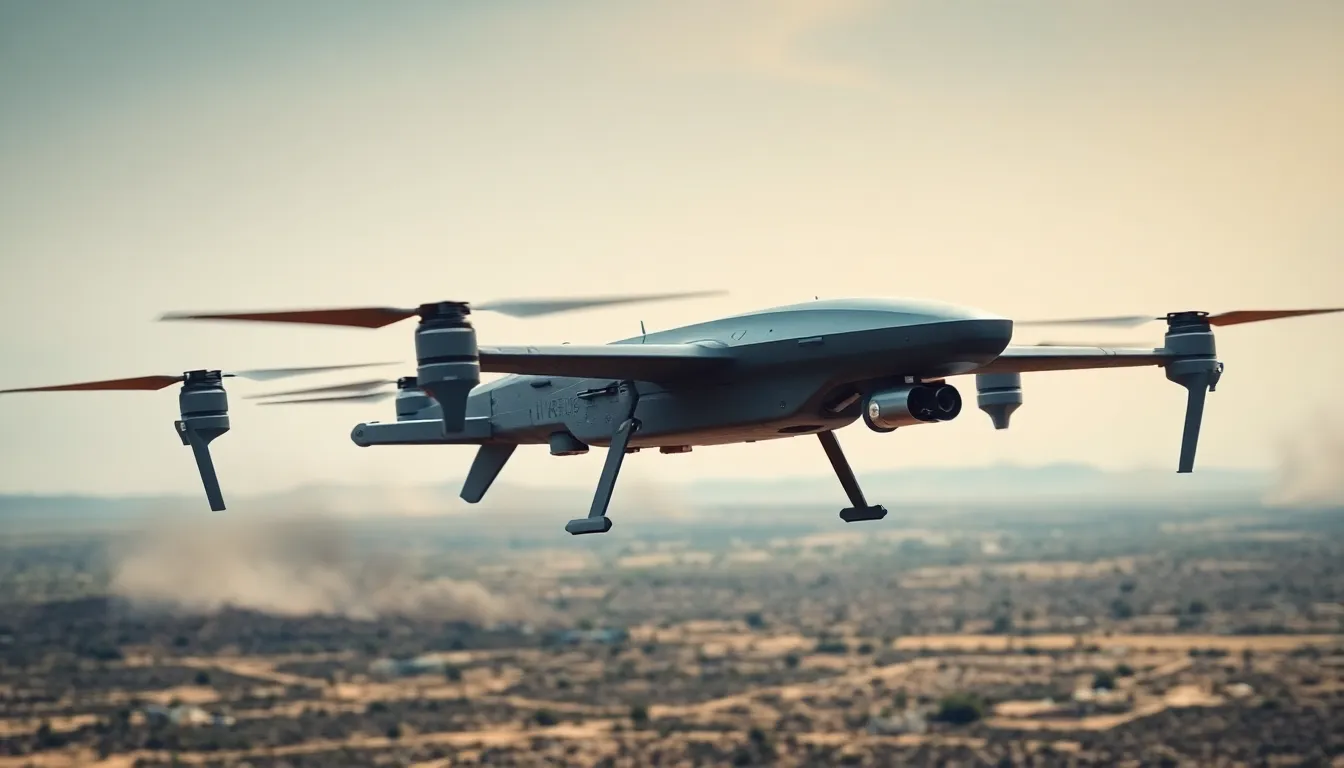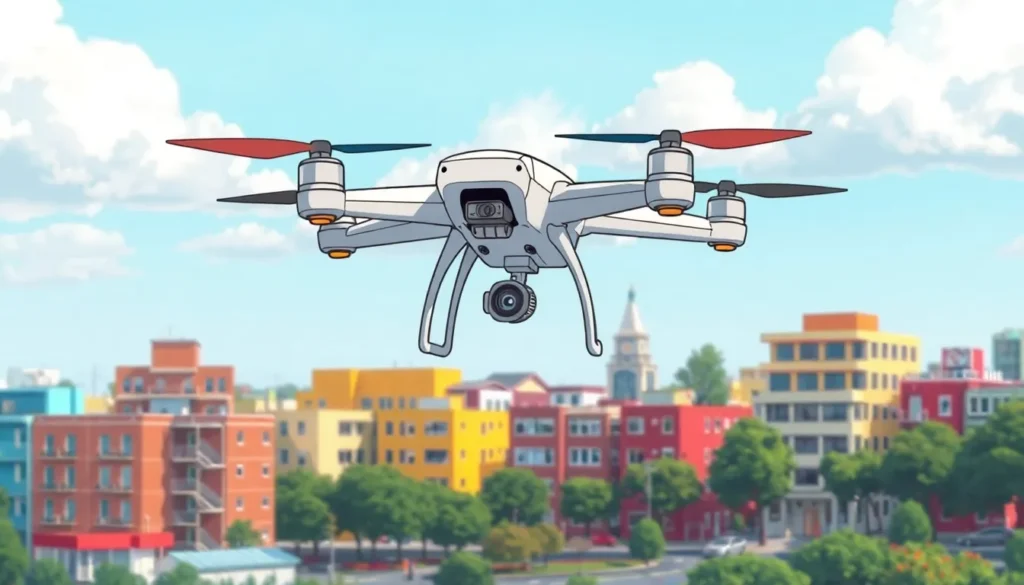In a world where drones buzz around capturing stunning landscapes and delivering packages, one can’t help but wonder—what if they took a detour into the bizarre realm of the absurd? Enter “murder drones nude,” a quirky concept that combines the chilling efficiency of drones with a cheeky twist. This unexpected blend of technology and humor invites readers to explore a topic that’s as intriguing as it is entertaining.
Table of Contents
ToggleOverview of Murder Drones
Murder drones represent a significant advancement in unmanned aerial vehicle technology. Often equipped with advanced weaponry, these drones operate autonomously or remotely, performing tasks that range from surveillance to combat. Military forces worldwide utilize murder drones for targeted strikes, leveraging their precision and efficiency.
In terms of specifications, many modern models feature high-definition cameras, GPS capabilities, and artificial intelligence for enhanced functionality. These features allow for real-time data collection and analysis, enabling operators to make informed decisions during missions.
Notably, the emergence of murder drones has sparked discussions surrounding ethical implications. Debates center on their potential for misuse and the consequences of automating warfare. Furthermore, concerns include civilian safety and accountability, particularly in conflict zones.
The use of imagery adds to the allure of the murder drone concept. Comical representations, such as “murder drones nude,” generate interest by contrasting the serious nature of the technology with absurdity. This juxtaposition captivates audiences, fostering exploration into the bizarre intersection of technology and creativity.
Governments continue to invest in developing murder drone capabilities. Research and funding aim to enhance performance, including improvements in flight endurance, payload capacity, and stealth technology. Such investments indicate a shift toward increasingly sophisticated aerial systems, signaling possible future advancements in drone warfare.
The Concept of Drones in Warfare

Drones play a crucial role in modern warfare, transforming battlefield dynamics with their advanced technology. Unmanned aerial vehicles have significantly evolved over the years, enhancing military tactics and strategies.
Evolution of Military Drones
Military drones originated in the early 20th century, primarily serving as training devices. Development accelerated during the Gulf War, when drones primarily provided reconnaissance. Advancements in technology increased the capabilities of drones. They evolved to include precision targeting and autonomous operation. By the 21st century, armed drones became commonplace, prominently featuring in conflict zones. Current models integrate artificial intelligence, enabling enhanced decision-making. The capabilities of high-definition cameras and real-time data enhances battlefield awareness. Military forces utilize these drones to minimize risks to personnel while maximizing strike efficiency.
Ethical Implications
The rise of drones invites significant ethical discussions. Autonomous decision-making in drones raises concerns about accountability. Are military operators responsible for decisions made by drones? Civilian safety poses another critical issue, especially in populated conflict zones. Incidents of collateral damage prompt scrutiny regarding the use of armed drones. Debate centers around the balance between military efficiency and moral responsibility. Human oversight remains essential to mitigate these ethical dilemmas. An emphasis on regulations for drone use can help address public fears and promote safer technology deployment. The consequences of automating warfare demand thoughtful consideration from policymakers and military leaders.
The Symbolism of Nudity in Warfare
Nudity in warfare symbolizes vulnerability and raw humanity amidst mechanized conflict. This juxtaposition of the absurd and the serious offers a lens through which to explore the emotional landscapes of combat.
Artistic Interpretations
Artistic interpretations of “murder drones nude” bring forth a surreal critique of modern warfare. Artists often depict drones in unexpected ways, stripping them of their lethal capabilities to highlight the dissonance between technology and humanity. These interpretations challenge viewers to confront their perceptions of warfare. The absurdity of bare drones invites discussions on the ethics of using such machinery in conflict. Through exaggeration, artists can express deep societal concerns, fostering dialogues on the implications of automated combat.
Impact on Public Perception
Public perception of drones shifts significantly when confronted with the concept of nudity. The idea of “murder drones nude” evokes humor, thereby making the topic of drone warfare more accessible. This humorous angle prompts audiences to consider the serious ramifications of warfare technology while acknowledging its absurdities. A lighter portrayal can soften the public’s response to the grim realities of drone strikes, potentially leading to discussions about policy and oversight. By merging humor with serious themes, this imagery helps demystify drones and encourages critical engagement with their use in military operations.
Case Studies of Murder Drones Nude
Murder drones embody advanced military technology while also inspiring creative interpretations, including the concept of “nude” drones. Various artistic representations reveal these drones stripped of their armed functionality, encouraging dialogue on the absurdity of their roles in conflict. For instance, one installation integrates human figures with drone imagery, creating a stark contrast that evokes vulnerability and humanity in mechanized warfare.
Art students at a prestigious university recently produced a series of sculptures depicting murder drones without weaponry. These sculptures invite viewers to reconsider the implications of aerial combat and challenge the societal normalization of violence through technology. Artists aim to provoke thought around moral responsibility, opening a platform for discussion on ethics in warfare.
A notable case study emerged from a film festival, showcasing a short that animated murder drones in a humorous yet critical light. The film featured these drones navigating everyday human scenarios without their traditional loadouts, prompting audiences to reflect on the absurdity of warfare-related technology in civilian life. Visual storytelling emphasizes how exposure to this juxtaposition can shift public perception and foster critical conversations.
Military drills occasionally include mock scenarios featuring drones in non-combat roles, emphasizing their expanded utility. In simulations, military personnel formulate strategies relying solely on surveillance capabilities, underscoring the importance of ethical considerations when deploying such technology. These exercises also highlight how engineers continually advance drone design, balancing functionality with moral accountability in combat situations.
Community art projects often center around themes of technology and war, gathering public input on the ethical deployment of unmanned systems. Participants contribute their thoughts through workshops that explore the implications of drone usage, further reinforcing the connection between artistic expression and serious military issues. Such community engagement broadens the understanding of murder drones, blending creativity with a commitment to ethical discussions.
The concept of “murder drones nude” serves as a unique lens through which to examine the complexities of modern warfare and technology. By blending humor with serious themes, it invites critical reflection on the ethical implications of drone use. This juxtaposition not only highlights the absurdity of automated combat but also encourages conversations about accountability and civilian safety.
Artistic interpretations play a vital role in shaping public perception, making the topic more relatable and accessible. As technology continues to evolve, the discourse surrounding drones must balance military advancements with moral responsibility. Engaging with these themes fosters a deeper understanding of the challenges posed by unmanned systems in warfare, ultimately promoting a more thoughtful approach to their development and deployment.

